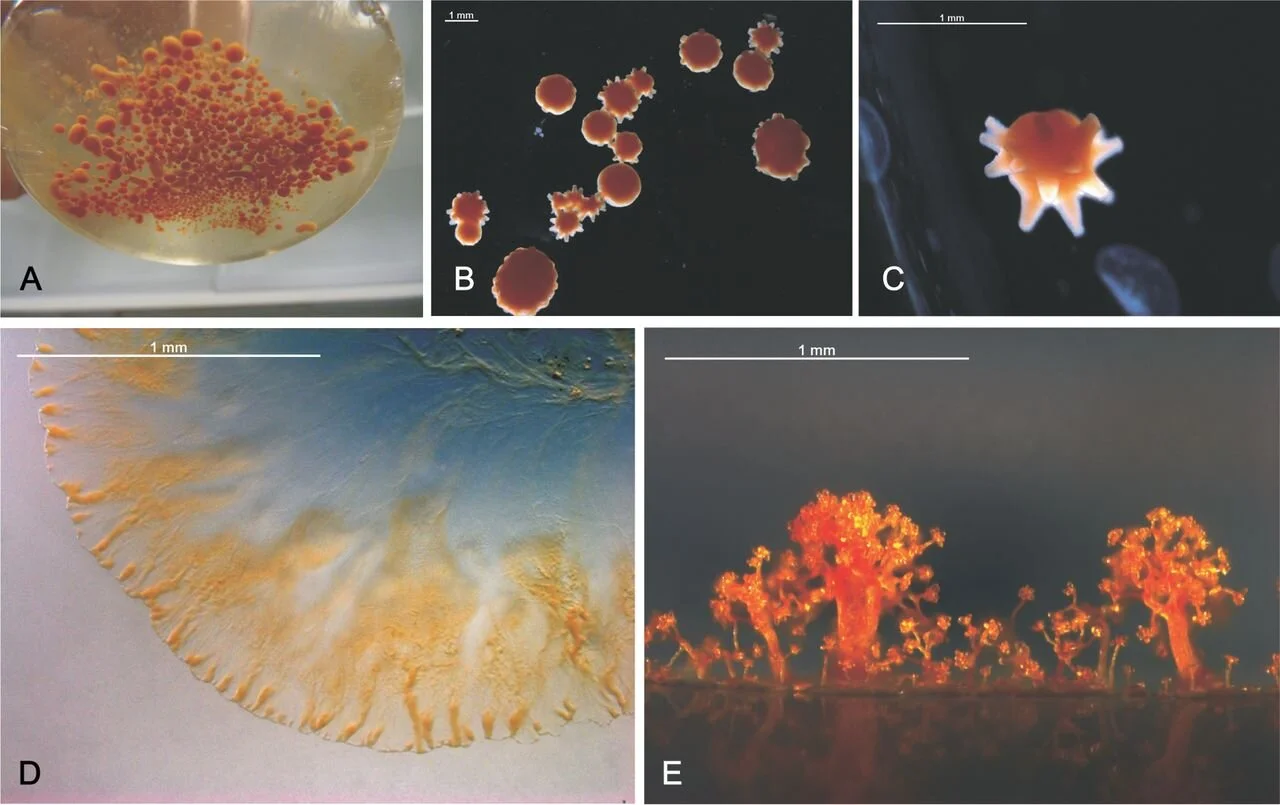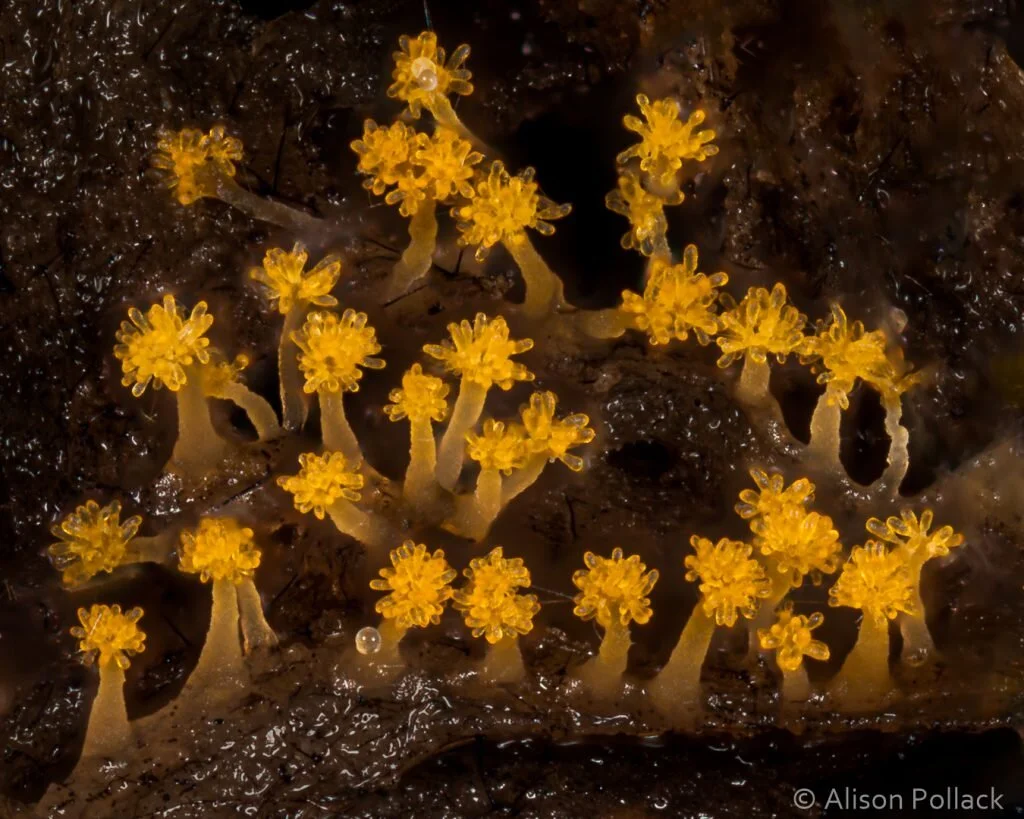The Origins of Multicellularity (II)
Our first entry on multicellularity presented multicellularity as a phenomenon that has roots in the very origin of life. This entry will continue working on the question of what makes a multicellular organism, the evolutionary roots of this lifestyle, and will end on the differences between this kind of communal living and complexity - the kind we find in plants and animals.
LUCA
It is unclear if the last universal common ancestor (LUCA) - the species that preceded the evolutionary cleavage between bacteria, archaea, and Eukaryota was multicellular. The fossil evidence that we have that goes back to the earliest life forms would suggest there was some kind of multicellular component, as there was no other way for these enormous, filamentous mats of bacteria to form.
However, a discussion of multicellularity doesn’t require us to rely on LUCA, since multicellularity does not fall on the list of characteristics that appear in all branches of life. Metalloproteins, enzymes with metal reaction centers, nucleic acids, membranes, ribosomes, ATP, the harvesting of low-energy chemical reactions - these are all characteristics that are fundamental to life. Membranes, too, fall on that list but it’s a little more complex since the actual chemical makeup of a membrane is up to each species. But multicellularity? It seems like many organisms can take it or leave it.
In fact, it seems to have evolved many different times throughout evolutionary history - maybe even up to 25 times in the eukaryotes, and several more times in the prokaryotic realm. Even within a single organism’s lineage - say, volvocine green algae, there are multiple separate developments of the lifestyle.
Types of Multicellularity
What’s interesting in the volvocine algae is that there are two forms of multicellularity - partial and complete. In the complete form, an organism arises with cells that cannot recapitulate the organism from scratch, and other cells, gametes, that can be used for reproduction. In some ways, it seems that multicellularity requires the ultimate sacrifice of some cells vs others - death, vs continuing life.
It’s for this reason that the emergence of multicellularity requires a commitment to cooperative living. Cells must be able to adhere to one another so that they don’t float away when conditions change. They also need to have effective ways of communicating with one another, so that the entire community can respond to environmental changes as a cohesive unit. And then there is death. For a community to turn into an organism, there must be a way to program certain cells to die - otherwise, there’s no brake pedal on the system, and the community can easily grow itself into crisis.
There are a few different reasons that a single-celled organism would be interested in considering joining up with its colleagues. The first is that when you live together there the benefit of public goods. Much like living in a city means there’s a sewer to hook up to, water main that will carry water to your house, roads to drive on, maybe even someone to salt and plow them in the winter. Prefer to live in the country? That’s fine - but you can’t expect to have any of the creature comforts that come from a densely populated urban area. Be prepared to make everything yourself - from your firewood to your clothes to your food.
In biological terms, public goods take many different forms. Some are exo-enzymes, which are secreted enzymes. Yeast are a great example of this. Their preferred foodstuff is sucrose, a two sugar compound. But it turns out that their ability to actually get sucrose into their cells is pretty low - but it’s high for glucose and fructose, the breakdown products of sucrose. In solution, yeasts will form clumped colonies, in which each cell produces low levels of invertase, an exo-enzyme that is released from the cell, and breaks down sucrose into components that can be absorbed more easily.
In this case, colony-growth is necessary to optimize for speed for growth. But there are other cases, too. Many bacteria have what are called “quorum sensing” systems. These systems depend on a molecule that is constantly produced - something that doesn’t cost too much to produce. When the colony gets to be so large that the concentration of this compound builds up, the cells undergo changes in gene expression - everything from the initiation of biofilm formation to the production of antibiotics (molecules that can be used to communicate with /kill other species).
If that wasn’t enough to convince you to move in with your 10 billion best friends, there’s also the resource sharing aspects of multicellularity. Though we normally think of cooperative hunting as being the domain of whales forming bubble nets, wolf packs taking down elk, or humans stalking a mastodon, it also happens in the microbial world. With the help of exoenzymes, large swarms of bacteria like Myxococcus xanthus can move in an enormous swarm that surrounds their microbial prey and digests it. The cells closest to the site of the kill absorb the nutrients, and tight cell-cell junctions allow for nutrients to diffuse through the entire colony. In addition to hunting benefits, there’s also the increased protection from predation - it’s much harder for a protist to absorb an entire colony of cells than it is for the creature to isolate a lone bacterium and gobble it down.
These characteristics also lend themselves to an eventual division of labor, which is a necessary precursor to complexity. Imagine if instead of being made up of at least 200 different cell types, the human body was just made of the exact same cell, over and over again. It’s impossible to imagine. There would be no compartmentalization, no ability to separate one process from another - since all cells would be largely identical to one another. Specialization of labor is by no means complexity, necessarily. There’s a lot of steps in between - but the ability to have colony cells do different things is the very first step on that journey.
Specialization can lead to complex morphological forms, as we see in bacterial biofilms. It produces the first forms of sexual reproduction, where there is a subset of cells responsible for the maintenance of the organism, and a subset that are only responsible for reproduction. Despite the myriad benefits, though, there are significant drawbacks.
Best Laid Plans Go Astray
One aspect that’s often pointed to is the fact that if you have communal behavior, you also have to deal with cheaters/defectors. Defectors can be considered in the framework of selection theory - in some cases, it might actually benefit an individual to defect on the whole. Sufficient public goods, like those mentioned earlier, means that some individuals could avoid producing something that takes resources because everyone around them is already producing it. This is like herd immunity for those that choose not to vaccinate their children. If a few people don’t vaccinate their kids, it’s NBD. But when you reach a tipping point, things fall apart, and you end up with astronomical rates of preventative diseases. The same principle holds in bacterial colonies, where a few defectors won’t really change things. But exponential growth patterns in bacterial colonies mean that a few defectors can destabilize communities and prevent the development of progressive complexity since cheaters often outcompete those that play by the rules.
Dealing with what’s called dead-end cells is another preoccupation on the road to progressive complexity, and this is where the tradeoff between defection and cooperation really manifests itself most clearly. Cooperation has its drawbacks. An organism with many cells that can cooperatively hunt for food makes sense - but then, there’s the fact that supporting a population can lead to starvation if and when conditions change. For that reason, higher-order complexity can only evolve in relatively stable environments. It also brings about death, aging, and disease - which must be offset by the advantages.
We’ll deal with that next week - but today, there’s another approach to handling dead-end cells that I’d like to explore, and that’s the Myxobacterial way.
The Myxobacterial Way
I mentioned Myxococcus xanthus earlier in the article, so we know already that they’re exo-enzyme hunters of the bacterial world. But research shows they behave together in other ways. The bacteria have three distinct phases - the swarming phase, the fruiting phase, and the spore phase. When the spores hatch, the swarming phase starts all over again.
Chondromyces colonies in (A) shaken culture. Closeup photos in (B) and (C). Swarming/gliding motility on an agar surface in (D), and a side-view of fruiting bodies formed on solid agar in (E). Image is from Zaburannyi et al. (2015)
What researchers have found is that swarming motility is different from the kind of swimming that bacteria normally do in liquids. When they swarm, they glide - and gliding requires a little bit of public good. The leading edge of the swarming colony produces a lubricating substance, which extends some distance from the front edge of the colony. A second wave of bacteria then washes over this leading edge, and in turn, begins producing the lubricating substance. In this way, the colony moves until it reaches a food source, where high concentrations of exo-enzymes, produced by the high cell density, allows the colony to feed and grow.
At some point though, there’s a chain of events that triggers the production of a fruiting body - which, much like a mushroom, is a mechanism for the organism to distribute spores, to make more of itself. The cells that make up the fruiting body, if they aren’t spores, presumably perish in the process. But the spores mature, disperse from the fruiting body, and start the entire process over again when they hatch.
What this suggests, is that there’s a subset of the colony that is a dead-end - but only for a short while. Instead of maturing into a long-lived organism where the vast majority of the cells are dead-ends, like the human, this life cycle allows for the continuation of the many at the temporary expense of the few.
Since the colony is so highly related, this sacrifice is evolutionarily insignificant. All spores produced will be identical to the cells that made up the fruiting body, and so the cycle can seamlessly start again, without losing any genetic information. Any cell that grows better in the colony than it’s neighbors will eventually take over - but will always run into the problem of nutrient limitation.
5X zoom of myxobacterial fruiting bodies on a moist surface. Nodules on the fruiting bodies contain spores, which will continue swarming after hatching on a moist surface.
The formation of the fruiting body and subsequent sporulation is triggered by a yet-unknown signal but might be related to nutrient concentration, as this is the most robust signal for this phase change that’s ever been observed in the laboratory.
Since the fruiting body program has to be triggered long before resource limitation actually occurs - otherwise cells run the risk of not being able to complete the program, which is resource-intensive - it seems like this is actually a control on growing beyond the carrying capacity of the environment that feels like it could be modeled on a larger scale, though the direct parallels are still misty in my own understanding.
The end result is that there are many ways to many cells… a discussion that we will continue next week by looking at complexity in eukaryotes, rather than bacteria.








